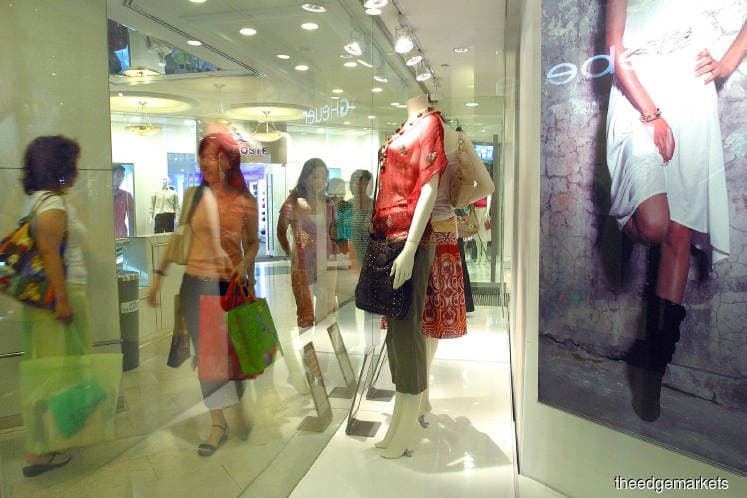
This article first appeared in The Edge Malaysia Weekly on June 29, 2020 - July 5, 2020
THE retail participation seen today reminds many older investors and market observers of the explosive super bull run in the 1990s.
“The high retail participation in the past two to three months brings to mind the period during the early 1990s. It started around March 1993, then it continued until the end of the year, so it was about nine months. We have not seen that kind of retail participation for a long time,” says Pong Teng Siew, former head of research at Inter-Pacific Securities.
However, he does not think the high retail participation will be sustained.
“Unless money in circulation grows very rapidly, this [high retail participation] will not be sustainable — even when the market is in a super bull. During the 1990s, loan growth was 30%; and the banks gave out a lot of loans. This time around, there is no new money. It is the same money, just being redeployed,” explains the recently retired Pong.
He points out that market trading volume has been declining at a steady pace from a peak of 11.3 billion on May 18.
“I believe this marks the end of the bull run led by retail investors. The speculative interest remains; as you can see, the ACE Market is still very strong. But for high-priced stocks, the interest has slowed down,” he says.
Compared with the 1990s, Kenanga Research head Koh Huat Soon believes the current liquidity-driven rally is not sustainable.
“The country was expanding like crazy, with gross domestic product growth of 8% [in the 1990s]. And now, we’re in a recession. This time around, [the rally] is fuelled by very strong liquidity due to the OPR (overnight policy rate) and SRR (statutory reserve requirement) cuts as well as a loan service holiday. But these things cannot last. I feel that [retail participation will ease after September],” he says.
TA Securities senior technical analyst Stephen Soo begs to differ. He believes active retail participation will continue, but the main concern is the end of the six-month moratorium in September, which will cause a liquidity drain.
The lifting of the short-selling ban is also a concern, he adds.
Nonetheless, last Friday, the Securities Commission and Bursa Malaysia announced a further extension of the short-selling ban to Dec 31, 2020.
The suspension took effect on March 24 and was extended on April 28, and subsequently targeted to end on June 30.
Koh does not foresee the return of short sellers triggering a market downturn as they are momentum followers. “If you ask me whether the short sellers will cause the market to drop, the answer is no.”
Areca’s Wong believes the low interest rate environment will keep investors in the stock market.
“It is better for them to invest in the share market over the long term because the risk-reward ratio is far better than the fixed deposit rate. It could also hedge against inflation and the cost of living.”
Technically speaking, TA’s Soo expects the local bourse to continue consolidating owing to uncertainties arising from the Covid-19 pandemic.
“The market will also digest the upcoming corporate earnings. Recently, there has been a slowdown in retail activity. As far as the index is concerned, it has reached the short-term peak of 1,590 points, so it looks to trade sideways with more downside bias. Things are quite choppy; we need to see more stability,” he says.
Sector-wise, he highlights that the oil and gas sector has been lagging even though oil prices have climbed steadily to above US$40 per barrel recently. WTI crude was last traded at around US$37 at the time of writing.
“I believe this sector should bounce back eventually. The current play is more on the technology sector. Glove stocks are still in a consolidation mode. Investors are seeing what would be their results going forward and it depends on how the second wave of the pandemic pans out,” Soo says.
The resistance level for the FBM KLCI is 1,590 points, while the immediate support level is 1,500 points, followed by 1,440 points, he estimates.
Kenanga’s Koh says the recent rebound in the stock market seems to reflect the expectation that earnings will rebound strongly in the second half, thus the FBM KLCI’s movement will be closely monitored in the next few months.
Amid the rotational play, Areca’s Wong sees consumer stocks and certain infrastructure and utility stocks garnering investors’ interest next. “These stocks have to wait for a while, maybe by 3Q or 4Q. Their current share prices are very attractive in terms of valuation and price-to-book ratio. They are worth a look when earnings start to recover.”
Overall, the local bourse is still very attractive, according to Wong, given that the FBM KLCI is trading at one standard deviation below the 10-year mean.
“If things recover, I think the index will go back to what it was before. It may go even higher in the next two years if the economy recovers faster than expected.”
Pong expects retail investors to focus on small-cap stocks, while institutional interest will remain the same. However, he says foreign institutions are very cautious about emerging markets, including Malaysia, which are mainly dependent on commodities and exports.
Save by subscribing to us for your print and/or digital copy.
P/S: The Edge is also available on Apple's AppStore and Androids' Google Play.